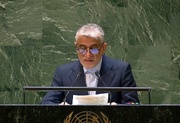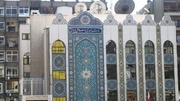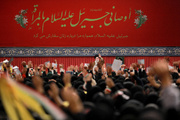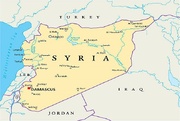For those who travel to the Indonesian capital of Jakarta which has around 11 million residents, it is hard to imagine that the city was limited to a small area now famous as ‘Old Batavia’. Indonesians call it ‘Kota Tua’ which means ‘old town’.
Batavia was established after the Dutch invaded Jayakarta (the old name of the region, literally meaning ‘town of victory’) in 1619. The walled city was built around Ciliwung River. Gradually it was expanded westwards and was given Dutch architectural features and planning such as public square, churches, canals and tree-lined streets. Too afraid of insurrection by local people, the Dutch wouldn’t allow any Javanese to live inside the walls.

The city’s construction completed in 1650 and as it gained importance as the headquarters of VOC (Vereenigde Oost-Indische Compagnie) that was prospering from the spice trade.
In the late 18th century, the city declined in prominence and was abandoned as people preferred to southward. Stagnant water of its canals and outbreaks of diseases such as Malaria are said to be reasons for its abandonment. However, in the early 19th century the Old Batavia regained its status as the center of Dutch East Indies.
After the Indonesia Revolution, businesses and banks moved from this region to the south which caused further deterioration of Kota Tua. But in 1972, Jakarta’s governorate designated the old town as a heritage site, urging all bodies to ramp up efforts to preserve the area.
Kuta Tua has seen many restoration efforts after 2004 which aim at revitalizing the buildings and enhance its position as a heritage site. Indonesia has also submitted the area along four outlying islands in 2015 to be inscribed as a UNESCO World Heritage site. In the justification for the submission, the areas has been described “As an excellent example of Dutch colonial city town planning and architecture during the 17th-18th century which were the golden age of the VOC,” and also “As the most complete surviving Dutch Colonial Capital City located at the centre of the web of the vast Dutch trading network in 17th-18th Century. The spice trade route from the Netherlands to the Middle East, the Indian Subcontinent, China, Japan, South Africa and the Spice Islands produced in Batavia, a city with multicultural heritages alive till today and which influenced the creation of an Indonesian culture reflecting all of these.”

There are numerous sites to visit in the Kota Tua. Located in its main square, Jakarta History Museum or Fatahillah Museum can be the first choice for a visit. Established in 1710 a grand public building, the museum now showcases relics about the city and its location from prehistoric times through the colonization period and until the independence of the country.
Wayang Museum, Maritime Museum, Fine Art and Ceramic Museum, Bank Indonesia Museum, and Batavia Café are among other destinations in the town.
If lucky you will have a great opportunity to take photos in the Fatahillah square with flying pigeons and with the Jakarta History Museum in your background. Also, you will have a chance to ride colorful bikes, feel a gentle breeze and enjoy your time.

Reporting by Mohammad Ali Haqshenas






















Your Comment